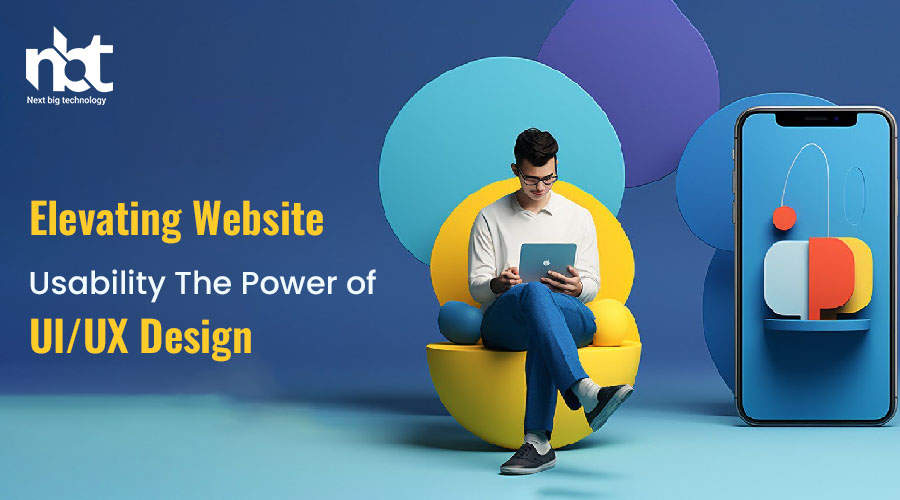Table of Contents
Introduction
In the ever-evolving digital landscape, the success of a website depends not only on its content but also on how well users can interact with it. This is where User Interface (UI) and User Experience (UX) design play a pivotal role. These two components work together to create a seamless and enjoyable online experience for users, leading to improved website usability. In this comprehensive guide, we will explore the fascinating world of UI/UX design and its impact on enhancing website usability.
Chapter 1: Understanding UI/UX Design
1.1 What is UI Design?
UI, short for User Interface, refers to the visual elements of a website or application that users interact with. This encompasses everything from buttons, menus, and forms to typography, color schemes, and layout. A well-crafted UI design ensures that users can navigate the website easily and access its features without confusion.

1.2 What is UX Design?
UX, or User Experience, delves deeper into the user’s journey. It focuses on the overall experience a user has while interacting with a website, encompassing factors such as ease of use, efficiency, and satisfaction. UX designers aim to create a seamless, enjoyable, and efficient interaction between users and the website, thus enhancing overall usability.
Chapter 2: The Connection Between UI/UX Design and Website Usability
2.1 Aesthetics Matter
At first glance, the visual appeal of a website influences user perception. A well-designed UI creates a positive impression, making users more likely to engage with the site. Simple, elegant designs with clear typography and appealing color schemes can draw users in, improving the overall usability.

2.2 Navigational Ease
A key component of UX design is ensuring that users can find what they are looking for effortlessly. Proper information architecture and navigation design are essential for users to move around the website with ease. This decreases bounce rates and encourages users to explore further, ultimately enhancing website usability.
2.3 Speed and Performance
A poorly designed UI/UX can lead to sluggish load times and unresponsive features, frustrating users and making them more likely to leave. In contrast, a well-optimized UI/UX design ensures that the website is responsive and loads quickly, which significantly contributes to improved usability.
Chapter 3: The Role of UI/UX in User Engagement
3.1 Creating Emotional Connections
Effective UI/UX design can evoke emotions in users. This emotional connection can lead to higher engagement and a more positive perception of the website. Engaged users are more likely to spend time on the site, interact with its features, and return for future visits.

3.2 Personalization
UI/UX design also plays a crucial role in personalizing the user experience. Features like personalized recommendations, user-specific content, and tailored user interfaces create a sense of belonging and make users feel valued. Personalization not only enhances engagement but also boosts conversion rates.
3.3 Accessibility
An often underestimated aspect of UI/UX design is accessibility. Ensuring that your website is accessible to users with disabilities not only broadens your audience but also demonstrates a commitment to inclusivity. A well-designed UI/UX includes features that cater to users with various needs, further improving usability.
Chapter 4: The Business Impact of UI/UX Design
4.1 Conversions and ROI
A website’s primary goal is to convert visitors into customers or clients. A user-friendly UI/UX design streamlines the conversion process, making it easier for users to take the desired actions, whether it’s making a purchase, signing up, or filling out a form. The result? Improved conversion rates and a higher return on investment.
4.2 Brand Loyalty and Trust
Consistency and reliability in UI/UX design instill trust in users. Websites that consistently offer a positive experience create brand loyalty. Customers who trust your website are more likely to return, make repeat purchases, and recommend your site to others.
4.3 Competitive Advantage
In a crowded online market, UI/UX design can set you apart from the competition. A well-designed website not only attracts users but also keeps them engaged, making it difficult for competitors to lure them away. It can be a sustainable competitive advantage that ensures long-term success.
Chapter 5: UI/UX Design Best Practices
5.1 User-Centered Approach
Start with a user-centered design approach. Understand your target audience, their needs, and their preferences. Conduct user research and gather feedback to tailor your design to their expectations.

5.2 Consistency
Consistency is key in UI/UX design. Maintain uniformity in design elements such as fonts, colors, and button styles. A consistent user interface reduces confusion and enhances usability.
5.3 Mobile Responsiveness
In an increasingly mobile world, ensure that your UI/UX design is responsive across various devices and screen sizes. Mobile optimization is no longer optional; it’s a necessity for usability.
5.4 Performance Optimization
Optimize website performance by reducing page load times and ensuring smooth interactions. Users are more likely to stay engaged if your site is fast and responsive.
5.5 Accessibility
Prioritize accessibility by adhering to WCAG (Web Content Accessibility Guidelines). Ensure that all users, regardless of disabilities, can interact with your website effectively.
Chapter 6: Measuring UI/UX Design Impact
6.1 Key Performance Indicators (KPIs)
To assess the impact of your UI/UX design, you need to monitor key performance indicators. These may include bounce rate, conversion rate, user engagement, and time spent on the site.
6.2 A/B Testing
A/B testing involves comparing two versions of a webpage to determine which one performs better. This method helps you fine-tune your UI/UX design based on real user data.
6.3 User Feedback
Gathering user feedback is invaluable. Use surveys, interviews, and usability testing to gain insights into user preferences and pain points. User feedback can guide design improvements.
Chapter 7: Case Studies in UI/UX Design
7.1 Apple: A Masterclass in UI
Apple’s UI design is a paragon of simplicity and elegance. The clean lines, intuitive icons, and user-friendly interfaces have set a benchmark in the tech industry.

7.2 Airbnb: Elevating UX
Airbnb excels in providing a seamless and personalized user experience. Their platform is designed to make users feel at home, enhancing engagement and trust.
7.3 Amazon: Conversion Optimization
Amazon’s UI/UX design focuses on streamlining the shopping process. They employ features like one-click ordering and personalized product recommendations to boost conversions.
Chapter 8: The Future of UI/UX Design
8.1 AI and Machine Learning
The integration of AI and machine learning is poised to revolutionize UI/UX design. These technologies will enable more personalized experiences and predictive design adjustments.
8.2 AR and VR
Augmented Reality (AR) and Virtual Reality (VR) are pushing the boundaries of user interaction. UI/UX designers will need to adapt to create immersive and intuitive experiences in these environments.
8.3 Ethical Design
The future of UI/UX design will see a growing emphasis on ethical design practices, including the responsible use of user data and the promotion of inclusivity and diversity.
Conclusion: Harnessing UI/UX Design for Improved Website Usability
In today’s digital world, the success of a website is intrinsically linked to its UI/UX design. A well-optimized UI/UX design not only enhances usability but also impacts user engagement, business performance, and brand loyalty. By adopting best practices, measuring design impact, and staying attuned to future trends, you can harness the power of UI/UX design to create a website that not only meets but exceeds user expectations, ensuring its long-term success in the ever-competitive online landscape.
Thanks for reading our post “Elevating Website Usability: The Power of UI/UX Design”. Please connect with us to know more about The Power of UI/UX Design.

















